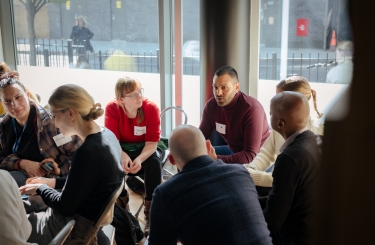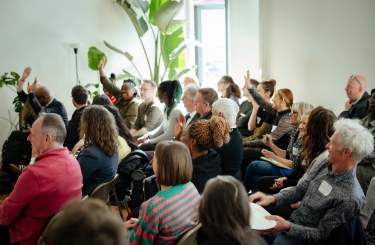Related



As part of our learning focus on participation, we spoke with Sadia Ur-Rehman, Resident Engagement and Participation Manager at the London Borough of Newham about what they've learnt from ‘People Powered Places’, their flagship programme for participatory budgeting and engagement of local residents.
A: The main aim of the People Powered Places programme is to involve the local community in decision making processes to foster a stronger, more cohesive and empowered community in Newham and give residents a direct say in how public funds are spent.
Between 2023 and 2025, £1.6 million of Neighbourhood Community Infrastructure Levy (NCIL) funding was allocated to the People Powered Places programme where residents have chosen 120 local projects through a participatory budgeting process. We have eight Community Neighbourhoods who have been allocated £200,000 to spend on improvements to the area. Residents decide on what solutions and policy priorities are needed in their local area and then vote on project proposals they think will address those priorities.
NCIL is a portion of the Community Infrastructure Levy, which is a charge which can be levied by local authorities on new developments in their area. A proportion of this in Newham is used to fund the People Powered Places programme. So residents get a direct say in how those funds are utilised in their neighbourhood. And it’s not just about bolstering democratic processes, it’s also about instilling a real sense of ownership and responsibility within the community because they’ve been involved in what is taking place in their neighbourhood.
Participatory budgeting helps create more transparency around how we use public funds and encourages a more honest conversation about how resources are allocated in the borough
A: What we have in Newham is a place based infrastructure for engagement, with the eight Community Neighbourhoods each having dedicated neighbourhood teams with frontline officers and community neighbourhood managers whose role is to undertake lots of outreach and engagement with all local residents. There will always be a little bit of friction and it’s not possible to engage everyone, however, we work hard to ensure we have extensive outreach and communication on the ground.
A: There needs to be a genuine commitment to community engagement and integrating feedback from local residents into tangible decisions and policies.
Making sure we communicate with residents in a way which is clear, accessible and ongoing has also been essential in enabling residents to participate. We’ve also realised we needed to be clearer about how the People Powered Places programme is different from the citizens’ assemblies also run by Newham council. This resulted in creating a dedicated brand for the programme, which has been critical in taking us to the next level of engagement.
We're always evaluating and tweaking based on what the community tells us. It's an ongoing process of listening, learning, and adapting to make sure participatory budgeting stays relevant and effective for everyone involved
The other element we’ve spent a lot of energy on getting right is inclusivity and accessibility. It’s been important for us to make sure that this process includes those who've traditionally been underrepresented in decision-making. Having the right infrastructure for this has been crucial and we’ve set up both physical spaces and digital platforms to make sure everyone can get involved easily.
A: I think one of the big challenges has been scaling up the programme to meet the unexpected increase in resident participation. This year alone we had 10,000 residents vote for projects they want to see in their local neighbourhood, both off and online. With 2,800 residents taking part in the voting process in the previous cycle, we did not anticipate so many more residents participating in this cycle. And whilst we have colleagues across our 8 community neighbourhoods working on the programme, our neighbourhood teams are not just working on the People Powered Places programme, they deliver many other projects and also, manage our local libraries and community centres. So, we were quite overwhelmed and we’re still on a learning journey which we’re working through with Citizens Lab, the developers of our online engagement and voting platform. Together with residents we’ve also made some changes and adapted voting processes in a co-design process alongside changes to the application form, to ensure they are more accessible for local groups and residents to apply for.
Our evaluation demonstrated that while we had diverse communities take part in the programme it wasn't reflective of Newham’s residents. So, we’ve undertaken lots of efforts to ensure our outreach is much more extensive and inclusive.
We've also had to learnt how to balance online and offline engagement and that we actually need to offer multiple channels of participation to cater different preferences and access levels among residents
Another thing that has emerged from our evaluation was the need for a longer programme cycle, which was originally one year. Through a co-design process with residents and internal stakeholders who work on the programme, we agreed to extend the programme cycle to two years to allow for at least one year of project delivery.
Overall, we’ve focused on embedding participation into every single step of the participatory budgeting process, from residents assessing and shortlisting applications to upskilling them to monitor how the projects are emerging in local neighbourhoods.
People Powered Places is a comprehensive model of participatory budgeting that fosters wide-ranging participation. It’s about creating opportunities for everyone – from those who want to think and deliberate to those who want to do and implement – young, old, online, offline, participating occasionally or regularly.
If you want to read more about the learning from the People Powered Places programme, check out Newham Council’s evaluation report here.


